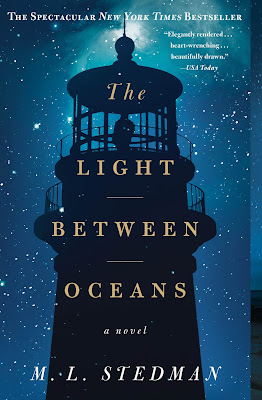"The Castle of Otranto" by Horace Walpole (published mid 1700s)
The Castle of Otranto tends towards an absolutely ridiculous riot of personal calamities within a Sicilian house owned by the family Otranto. Yet the catastrophes within the relationships within the castle's household is so obvious, cliche even (at times resembling a soap opera, or some other television drama), a complex narrative of differing perspectives not withstanding, that Walpole's take on a medieval Italian tale is completely serious in resonance (though sometimes allowing for the occasional knowing smile, if not laughter).
The catastrophe, having to do with romances forbidden (between a prince and his daughter in law, for example), ownership of property (the heir to the castle being a peasant, for ex.), and indiscretion within the family (the bond between two maidens so strong that even their love for the same man could not break it), on and on... makes the story's revelation - perhaps an apocalyptic one - about what the subjective idea of transgressions might do. That is, the crescendo of the transgressions and confessions, eye-witness accounts and powerful emotions, each particular to its subject, reveals the absurdity of an intermeshing of the characters in a web of dramatic impulse. Literal phantoms and ghosts, violent symbolisms appearing into view, prevent the characters' from relieving themselves of the filial religion that always threatens to oppress them. In realizing the maniacal effects of their passions, a chimeric reflection of it manifests within their castle, and all the terror, wrath, jealousy, and lust that overtakes their bodies is subdued as they find themselves with no choice but to be pious; as that is the only route which allows each to keep their life, i.e. to survive.
These apparitions without actual cause are not as religious as we might imagine. It is the apparitions, inversely, which are Gothic (the style in Walpole writes): massive armors crushing the bodies of tinier men, the grim reaper praying, sheathed in black, only a skeleton underneath, a holographic painting, swelling in enormity, looming. The rest of the narrative, in terms of setting, seems Christian and medieval. The castle with arches and chambers, secret passageways, convents, lawns. It is within this framework in which the characters operate. Only two references to places beyond - that of Naples and that of Algeria - are referenced, and even those places are crucial points of understanding the history of the characters who appear on Walpole's stage.
As for what the story might teach, I am not so sure. The human urge to transcend the boundaries in which they might feel imprisoned may be a universal lesson. However, their appearance, at least to this reader, as fallen angels from some higher plane to which they long to return (see the peasant Theodore, who willingly, on a few occasions, accepts his death because it means to him to go somewhere less horrifying than the life he lives) becomes as if a caricature of acts within a puppet of a body who dares not look its sins in the face. Perhaps there is something to learn there. Might this be the question: If humanity is a plaything, a set of marionettes for the creator to address at will, to what are the bodies subject? The emotional impulse of fleeting desires? A higher God which claims us all? Or, is each one free all along, releasing narrative, unleashing its word onto the world, finding out there is another realm which seeks to know it too? A good exercise might be examining when this freedom comes into fruition within the plot, be it evil or not. The murderous included, its forgiveness close at hand.




Comments
Post a Comment